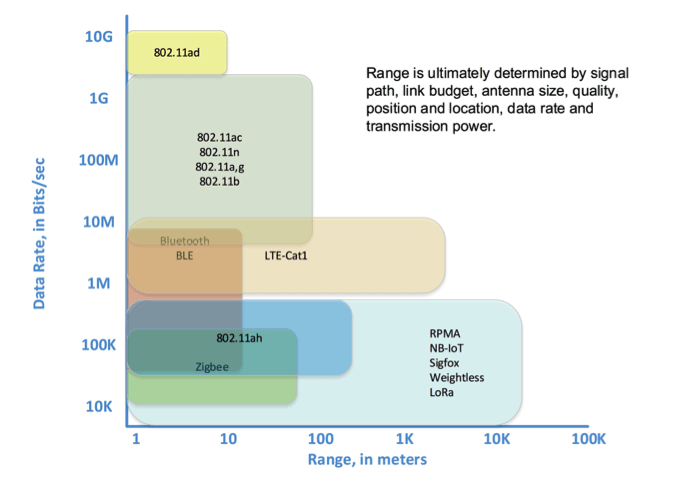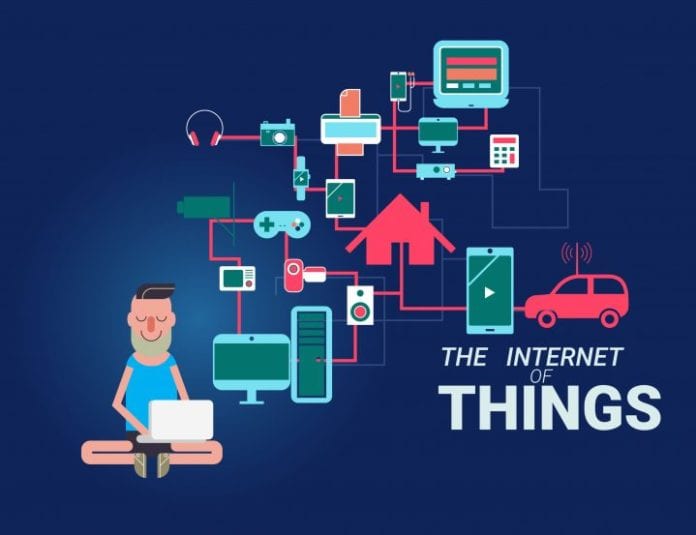What do you think of when you hear “Internet of Things” (IoT)? Controlling your thermostat remotely with your cellphone? Getting a break on your auto premium using a monitoring dongle in your car? There are plenty of gee-whiz IoT applications out there, but there are many more serious and even life-saving applications out there, from environmental and infrastructure monitoring to medical/healthcare and transportation operations. And the list is growing exponentially.
There are two ways to look at IoT. One is to consider its technology—devices talking to each other with little or no human involvement. The other is to consider its significance—its role in forming new business models, use cases, and applications. There are millions of existing devices out in the world already, with many more being designed, invented, and introduced every day.
Connectivity
For devices to enter the landscape of IoT, they must be capable of communicating with one another.
What’s required for effective connectivity depends on the application. Some use cases might require transmitting a couple of bytes intermittently, while others require sending a heavy stream of data. Some might be mission critical and require low latency with high robustness, while others might be okay with a lower QoS. Some might be all about scale, with massive numbers of devices being deployed: one size will not fit all.
About that Technology
There are different ways to look at connectivity technologies. Here, we look at them along two dimensions, the data rate and the range. This figure gives an overview of the different technologies and where they fall rather than calling out and handling each technology individually.

Short Range Technologies
• Wi-Fi—One of the most widely deployed and used technologies, Wi-Fi is based on 802.11 and operates on ISM 2.4 and 5 GHz bands. People are looking at 802.11ad, which can support superhigh data rates, but is severely limited in range. Wi-Fi Halo (801.11ah) is another option. This it has lower data rates than 802.11ad, it supports lower power, longer ranges, and is viewed as a competitor to Bluetooth for some uses.
• Bluetooth—Quite widely used today, this operates in the ISM 2.4 GHz band and is based on industry standard IEEE 802.15.1 and the work of SIGs. People are looking at Bluetooth low energy (BLE), Bluetooth Smart to support IoT.
• ZigBee—Based on IEEE 802.15.4 and SIG. this operates at 2.4 GHz or lower ISM bands (915 MHz). Used in home automation, smart energy, healthcare, and similar products, this is considered less expensive than Bluetooth and simpler to integrate.
• Z Wave—Based on ITU G.9959, this operates in the 900 MHz ISM band. It is used quite extensively for home automation and security.
Longer Range Technologies
There is a need for longer range technologies, which have requirements differ somewhat from traditional long range technologies:
• Better than traditional cellular coverage (>10 dB)
• Long battery life (years)
• Low device and deployment costs
• Support for a massive number of devices
Technologies
• LoRA—Operating in sub 1 GHz ISM bands, this is backed by the LoRa Alliance.
• NB-IoT—Based on 3GPP, this operates in the licensed spectrum. Includes enhancements to traditional LTE (improved indoor coverage, support for many low-throughput devices, low device cost, low power consumption).
• RPMA—Operating in the 2.4 GHz ISM band, this supports a wide-link budget of 172 dB—capable of supporting extremely long ranges/cells. It is backed by San Diego–based company Ingenu.
• Weightless—An open standard LPWAN technology operating in sub-GHz spectrum (with the option to work in licensed spectrum), Weightless is led by the Weightless special interest group.
• Sigfox—Operating in the 860 MHz ISM band in Europe and the 900 MHz ISM band in the United States, this supports a wide-link budget of 162 dB— capable of supporting extremely long ranges/cells. It is backed by the French company Sigfox.
Summary
IoT is expanding rapidly into every aspect of our lives. Connectivity is an integral cog in the overall mechanism of IoT, both its technology and its significance, and critical for realizing its full potential. The variety of technologies in terms of coverage/range, data rate, power consumption, spectrum, and other characteristics ensures that there will be an optimal connectivity solution for every IoT demand.
 Vivek Vadakkuppattu is vice-president of product management and marketing at Azimuth Systems.
Vivek Vadakkuppattu is vice-president of product management and marketing at Azimuth Systems.

